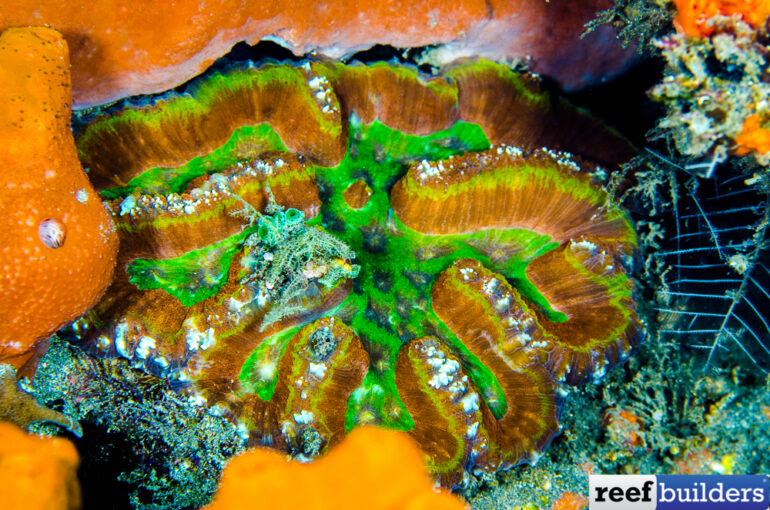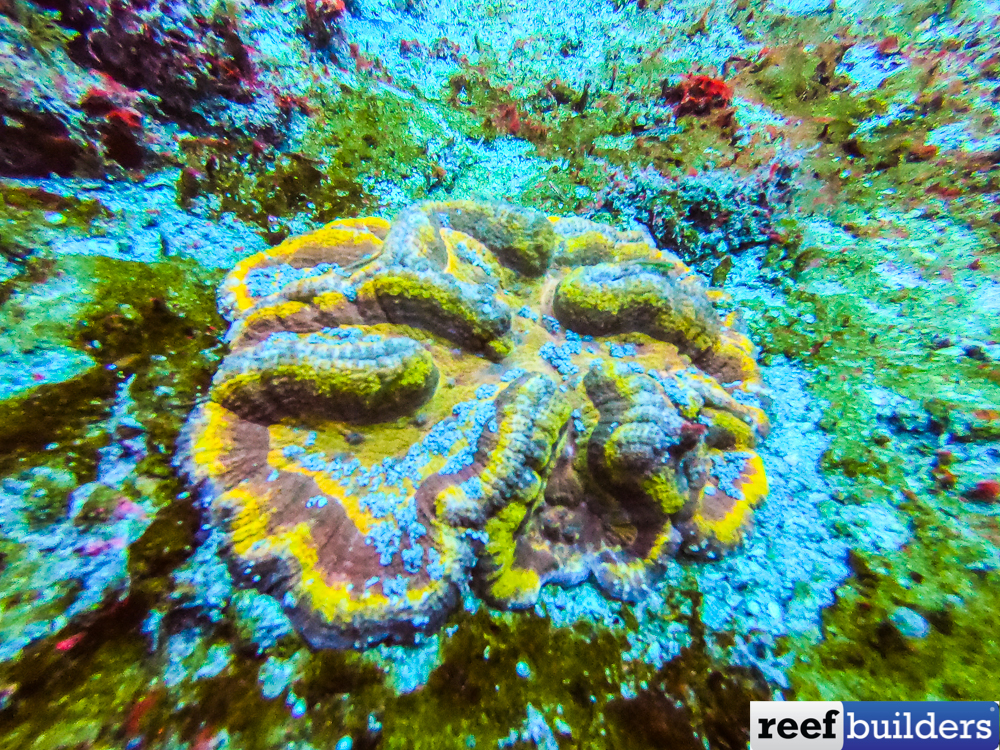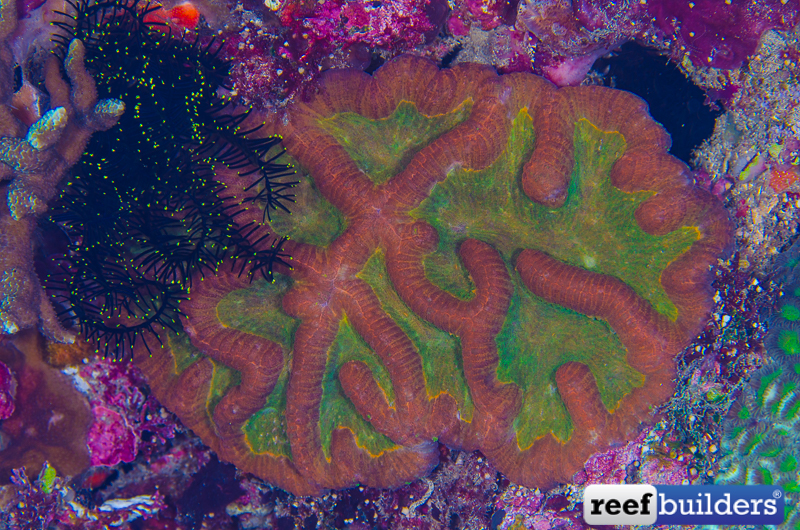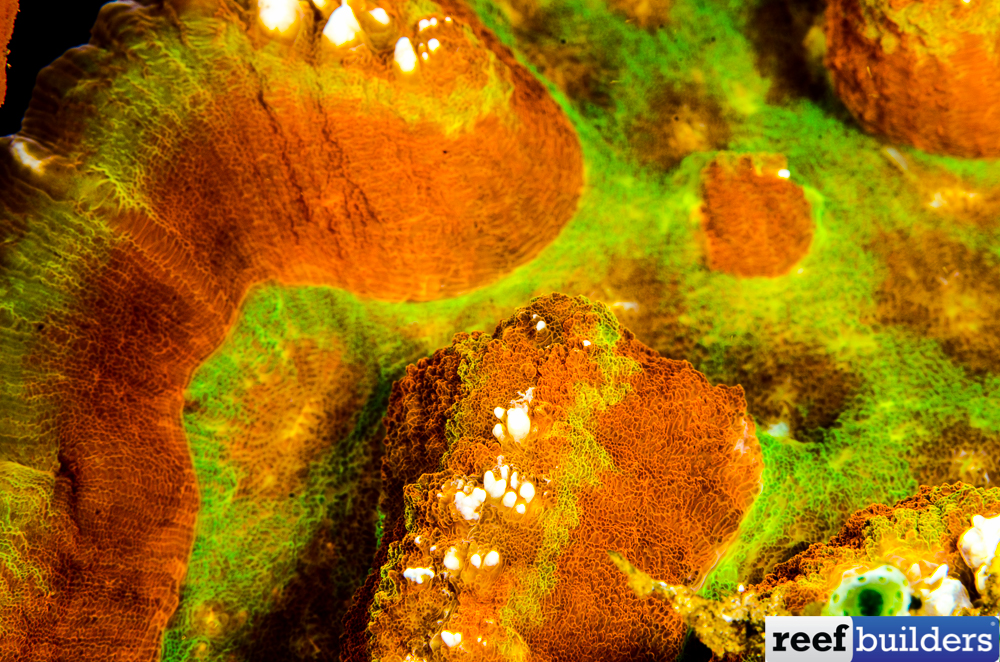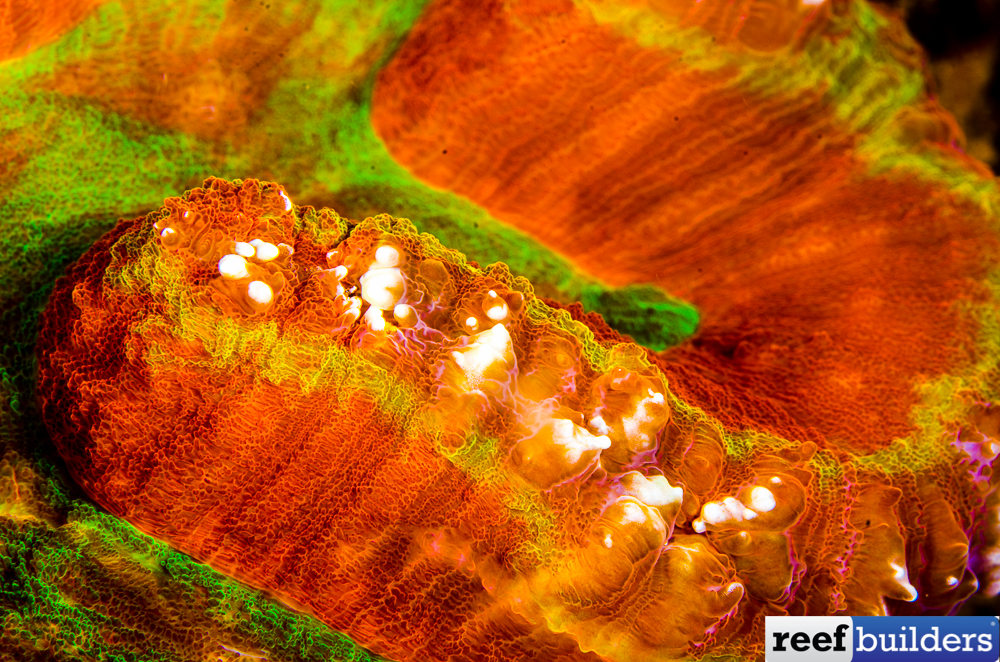Australians have been calling their rainbow lobos Symphyllia for a while, and we already addressed that. But while diving in Indonesia we came across a real rainbow Symphyllia, we thought we will share it with you.

First of all there is a little bit of controversy regarding the status of Symphyllia, as the Lobophyllidae are being revised, and Symphyllia might become Lobophyllia soon. But for the time being, the coral pictured here is still an accurate representation of Symphyllia valenciennesii as we currently understand it.
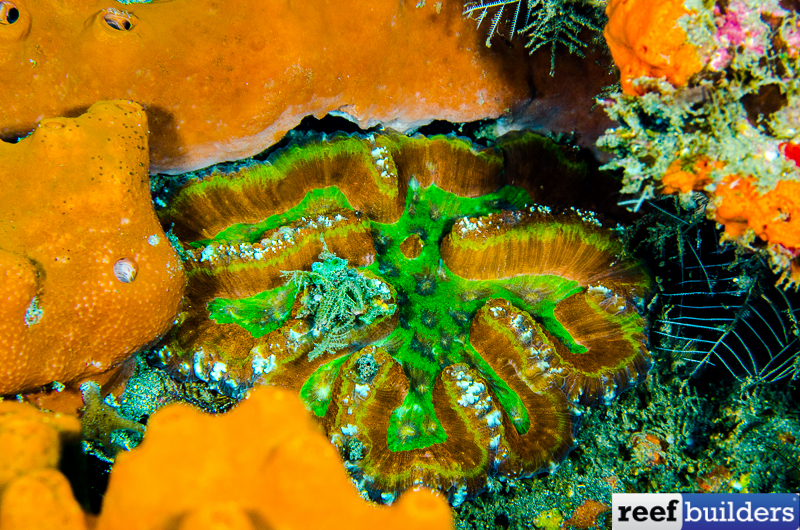
This Symphyllia sighting is a reminder of how Indonesian corals are greatly missed, and we’ll never know if these will ever be back in the hobby. S. valenciennesi are usually flat, with valleys radiating from an open central area. So they are pretty much easy to differentiate from other species of the genus. Rainbow and Gold S. valenciennesi were quite common two years ago, and some of the nicest one would sell for a premium.
We found this piece, in 15 m (45ft) of water on a reef slope, on an exposed tip of the coast, with very nice coral cover and subjected to heavy tidal flow but protected from wave action. The bottom of the slope was covered with high flow non photosynthetic soft corals and gorgonia, which is a sign that water flow get ripping some time to time around there. S. valencienesii tend to live a bit deeper than most other Symphyllia. So low blue light with strong flow is preferred in aquarium.
S. valenciennesii in red and green coloration is pretty common in this part of Indonesia, the red and gold, a lot more difficult to find and the rainbow is very rare. This particular piece, wasn’t found too deep, but it was sheltered under a bommie, and below a massive sponge so it doesn’t receive too much light.
But the cavity where this coral lives is exposed to good flow, and the shape of the area probably created a vortex for food to land on the coral which might explain this awkward positioning. A lot of coral larvae tend to be more picky regarding food positioning than light really, especially in the LPS category.
We can only hope that these large, showy, fleshy stony corals will be made available again, either from another country, or through farming as they are really stunning and a great addition to a reef aquarium display.


